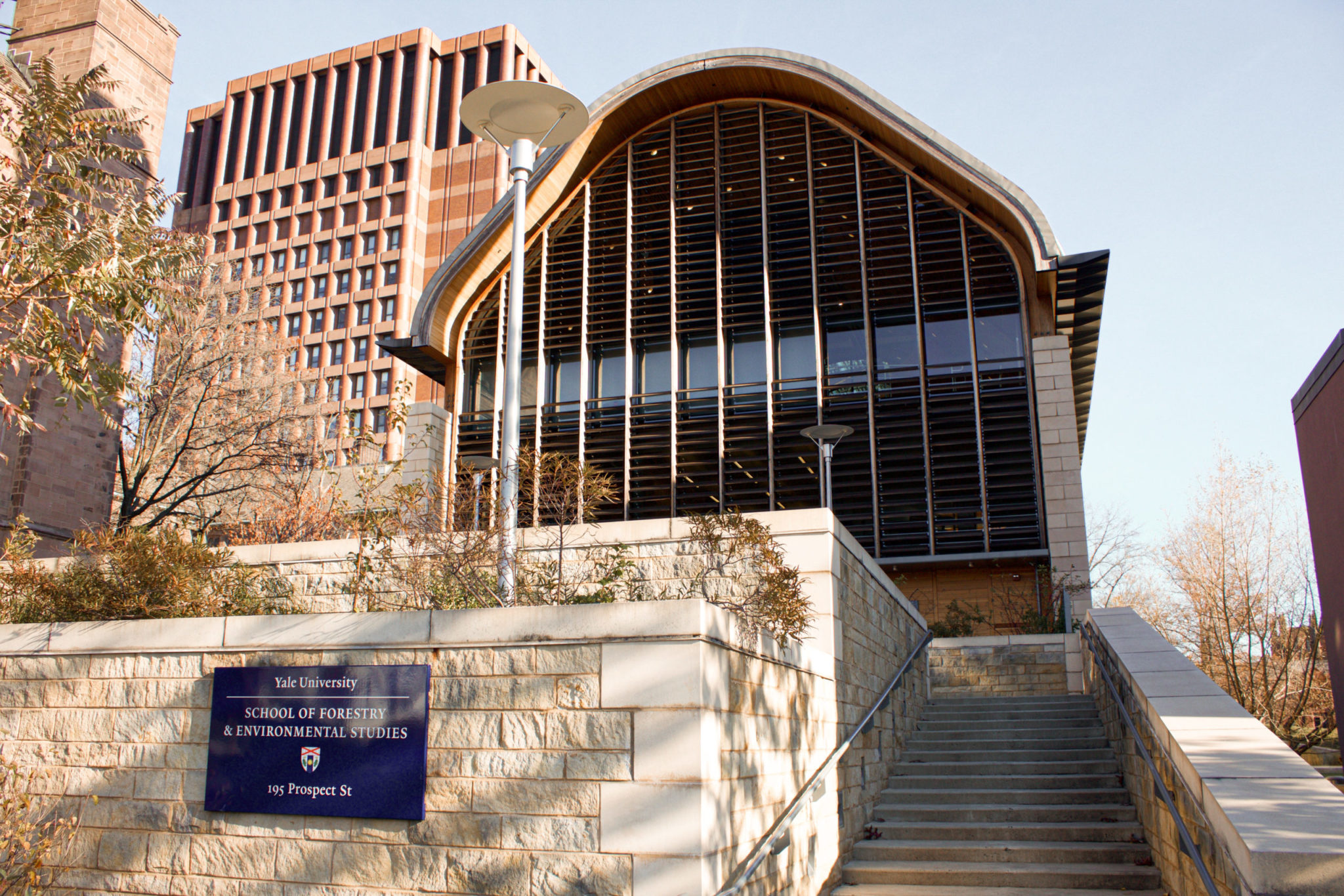Dr. Dorceta Taylor speaks on Dr. King’s environmental justice activism
In a presentation on Martin Luther King Jr.’s environmental activism, Dr. Dorceta Taylor makes a case for the Yale community doing more for environmental justice

Yale Daily News
On Friday, Dorceta Taylor ENV ’85 GRD ’88 GRD ’91, senior associate dean of diversity, equity and inclusion at the Yale School of the Environment, presented on Dr. Martin Luther King Jr.’s environmental justice activism and the importance of an intersectional perspective on environmental studies to a lecture hall full of Yale students, faculty and other community members.
Taylor has had a long and successful career studying environmental activism and sociology, and much of her research centers on the race, class and gender dynamics inherent in environmental activism. Taylor’s presentation focused not just on what environmental justice is, but on how King advanced the cause of environmental justice through his work. Fransha Dace GRD ’27 explained that environmental justice is a method of making sure everyone is protected.
“Environmental justice is ensuring that everyone has what they need from their environment,” Dace said. “Not just the natural spaces that they have access to, but also their food environment and political environment. Making sure that these institutions support everyone.”
Ashley Bell, a postdoctoral associate at the School of Environment, explained that environmental justice ensures that living in a particular neighborhood does not “equal a death sentence.”
According to Taylor, although King is not typically seen as an environmental activist, it is important to incorporate Black civil rights activists into environmental texts. In fact, Taylor said she sees environmental justice activism in the work of other prominent civil rights activists as well, such as W.E.B. DuBois and Harriet Tubman.
“One of the things I do throughout my work is to make connections that other people are not making [between civil rights activism and environmental justice activism],” Taylor explained.
Taylor was born and raised in rural Jamaica, where she said people of color were clearly invested in environmental studies and activism. However, when she moved to the United States, Taylor noticed a stark difference. She said that there were “very few” Black students in her advanced biology classes at Yale, and that she encountered ideas that Black people were not interested in the environment. This prompted Taylor to research racial disparities in environmental studies, where everything she read pointed to the same conclusion — that Black people are not interested in the environment.
But Taylor knew this to be false. As a result, she focused her work on environmental justice and blending environmental studies with justice and equity. Taylor’s work strives to ensure that all segments of the community are represented.
“History has shown that when we attempt to address issues through a siloed or single lens approach, the ending result will undoubtedly not have addressed the concerns of large segments of the community,” Bell said.
In her presentation on King, Taylor explained that he was brought from Alabama to Connecticut as a teenager to work on farms with other Black boys.
Taylor stressed that these young men were lied to about how much money they would make, that their food was restricted and that their work days were 12 hours long.
“Here are these young, Black students — elite students — being brought to a place like Connecticut to work long hours in the field,” Taylor said in the presentation. “Where was the humanity? Where were the renowned professors at places like Yale, Harvard, MIT … why were they so blind to the inequities going on?”
Taylor urged people today to do the work necessary to not be blind to environmental injustices like she said Yale community members were when King was working in Connecticut.
“It strikes me as being very near-sighted as people in elite academic spaces if we don’t look out and see inequalities and injustice and speak to it regardless of whether the person has the same skin color as we do,” Taylor stated.
Both Taylor and Bell believe that any Yale students interested in learning more about environmental justice should make use of the resources within the University. Bell suggested that students start with a Google search of various terms and concepts, and make use of the experts, seminars and other events offered by the University.
Taylor agreed, explaining how she had to do the majority of her research in the early years of her career without aid. At the time, she added, environmental justice as a field of study did not exist.
“When I was a student here [at Yale], there was nothing called environmental justice,” Taylor said. “For students now, it exists a lot. Take the time to do the readings.”
Dace also urged the Yale community to reach out and learn more, specifically from the School of the Environment Justice, Equity, Sustainability and Diversity Initiative.
“With a Yale education, let’s start looking at these things — go ahead and connect the dots,” Taylor said. “We might have a Martin Luther King sitting in a factory someplace, or a Thurgood Marshall.”
Bell and Taylor also emphasized that Yale students need to ensure that, in the process of educating themselves, they do not take over the conversation.
The most important thing for students to do, Bell said, is be prepared to listen.
“[Students need to] be prepared to have their mindset challenged,” Bell said. “Be prepared to, at times, feel helpless. But above all, be willing to work and just be an ally.”
The Yale School of the Environment’s New Horizons in Conservation Conference will take place on March 29-31. It will cover similar topics of environmental equity and justice, climate action and how to get started in climate change work.







